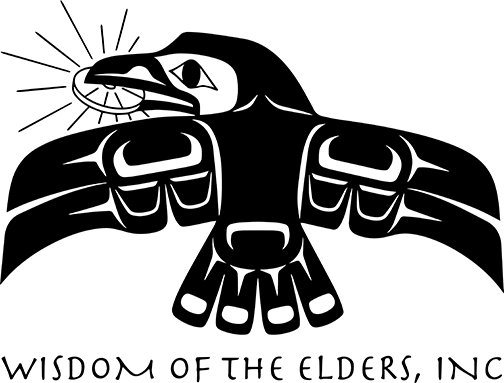Indian Medicine
My name is Yvonne Fox. My Indian name is White Buffalo Woman. It’s Danaha Daga or it’s Danaga, Dana Hadaga. My great grandfather was Little Sioux who was a scout with Custer during the Battle of Little Big Horn and did have a medal from that time.
Grandma Philamine, Mom’s mom, had an Indian medicine and so she was a really good example. I never knew of her getting mad at people or saying things about people or anything. She was just a good person. We got some of her medicine and that’s what she said. When you get some of the medicine they give you advice on how to live and not to be doing this and that and saying things and all that stuff so I think she was really a good influence on me.
She lived around here all the time and she took her grandchildren with her all the time. Finally, she had her great-grandchildren and she just kept them with her. She just took care of them all the time, but she always took care of us the old way. Not always but most of the time you know, she’d use the Indian way of taking care of flu or diarrhea and different kind of things that you can use herbal stuff with. She did that all the time with us, she didn’t. In the early days, you couldn’t jump in a car and run to the hospital or a clinic or anything. It just wasn’t. So we learned, you know, that if a person knew how to do all this stuff with the medicine and stuff, that it was helpful.
Yvonne Fox – White Buffalo Woman
Arikara elder, Yvonne Fox lives in the eastern part of the Fort Berthold Reservation, North Dakota. Her great grandfather, Little Sioux, was one of the scouts for Custer’s Seventh Cavalry at the Battle of the Little Big Horn. Her grandmother, Anna Dawson Wilde, was raised and went to school in Hampton, Virginia. After finishing school she came back to the reservation and became a field nurse. The tribe’s sacred bundles tell of migration starting in Central America and traveling over large water and were the first recorded location along the Mississippi River. The migration continued west along the Missouri River where today village and lodge circle remains are still in existence. After the Garrison Dam flooded the bottomlands, the tribe was forced to move up to the prairie.
Yvonne holds a Bachelor’s degree in elementary education and has been a teacher for more than 30 years. She was awarded “Teacher of the Year” by the National Indian School Board Association. She holds the position of Treasurer of the Sahnish Society. Spanish is the name we call ourselves. She is also a member of the Ladies Auxiliary of the Local Legion Indian Post, a member of the Old Scout Society, and most importantly is a holder of a medicine bundle from her grandmother.
Yvonne belongs to a cultural society made up of teachers from a local school, White Shield. They developed a curriculum for non-Indian teachers to teach Arikara history and culture. The type of storytelling Yvonne does depends on the audience. Her presentations are usually geared to children, but she has also presented to teachers and at education conventions. She tells stories about sacred rocks and places. One story is of the Medicine stone and how medicine people danced on it when it was heated up. Another story tells of the Grandfather rock that was carried all along the migration and they still have it today. At Fort Yates on the Standing Rock reservation, Standing Rock is an Arikara woman who turned to stone.
Yvonne is also a tribal culture specialist. She shares her knowledge of tribal dances and songs, along with the history of cultural artifacts, environmental issues, and tribal government. The Arikara have many tribal dances and songs, but ceremonies are kept within the tribe. Out of twelve sacred bundles, they have seven remaining. The bundles contain a symbolic history of the Arikara tribe tracing the people back to the very beginning of their existence. The Arikara are also known for their burden baskets and pottery, which is in the process of being revived.
Yvonne E. Fox
1025 B 61 st Ave. NW
Garrison, ND 58540
701-743-4379
yefox_39@hotmail.com
